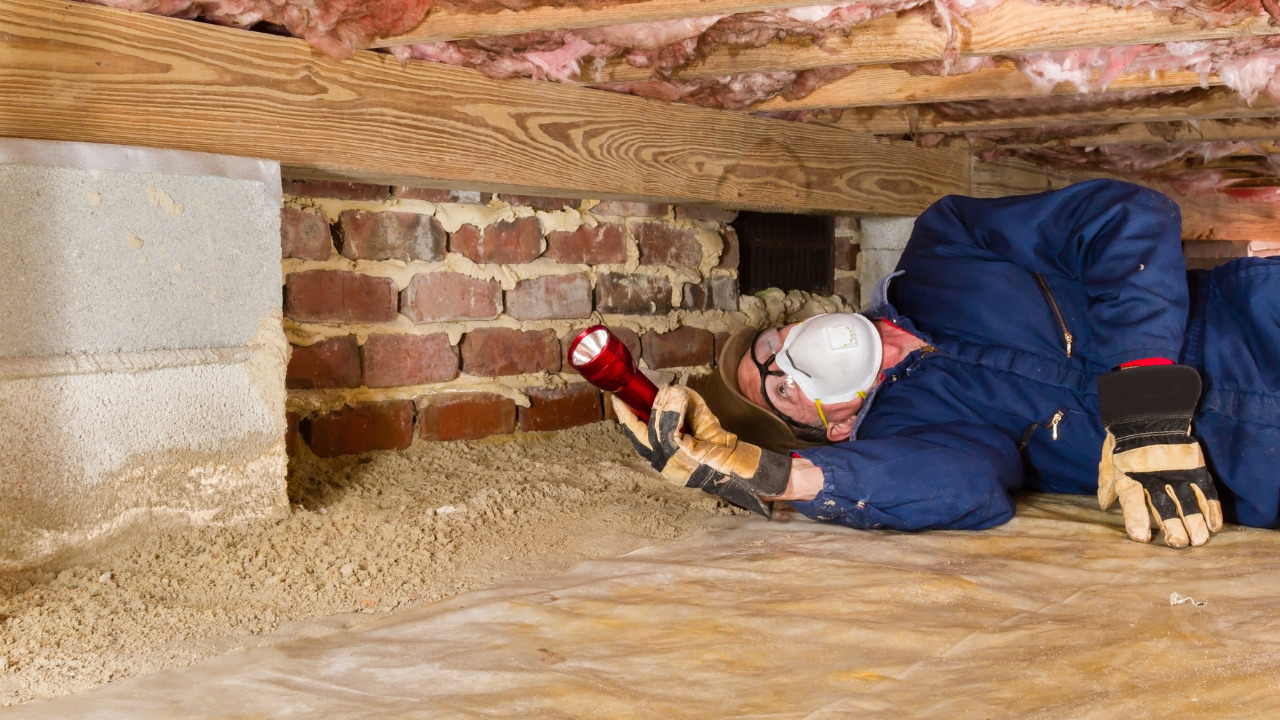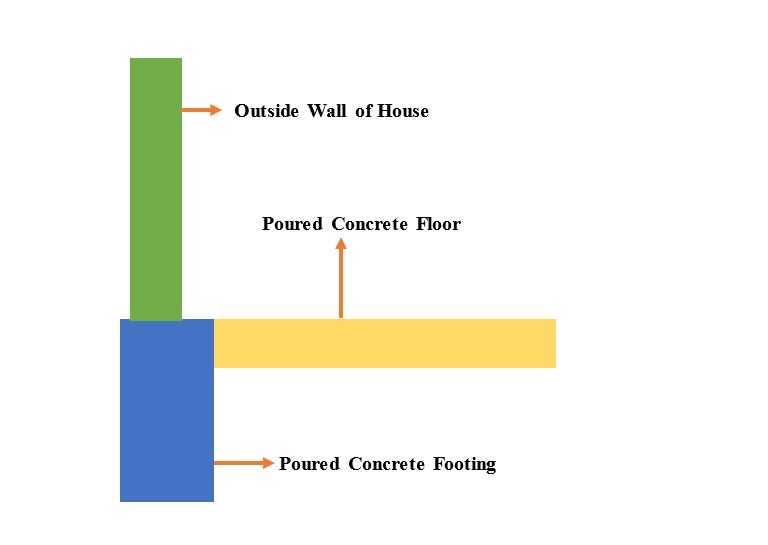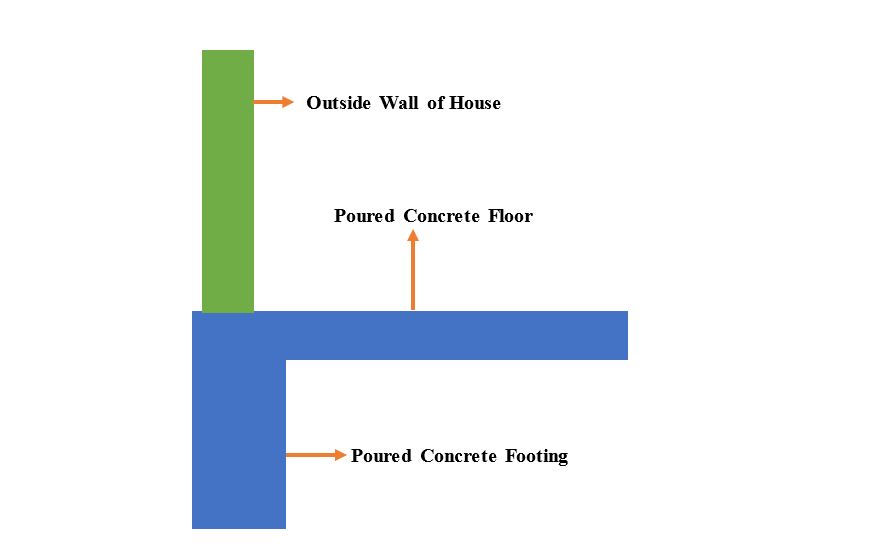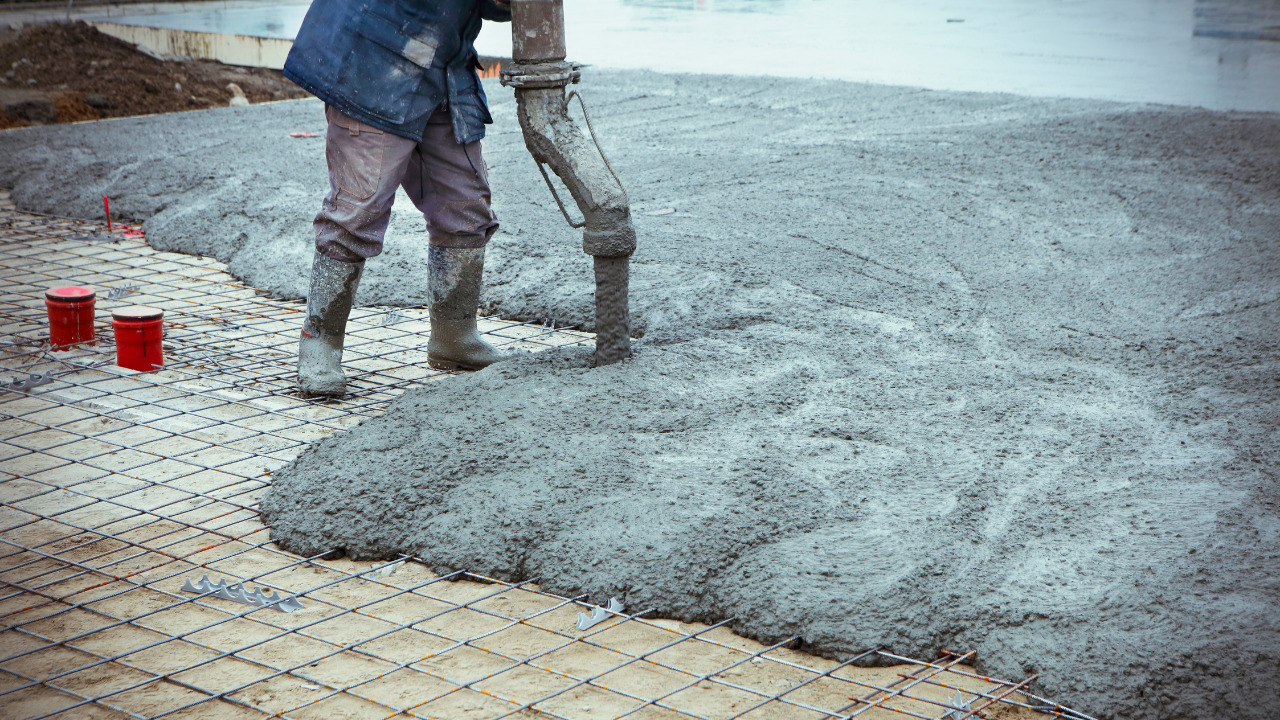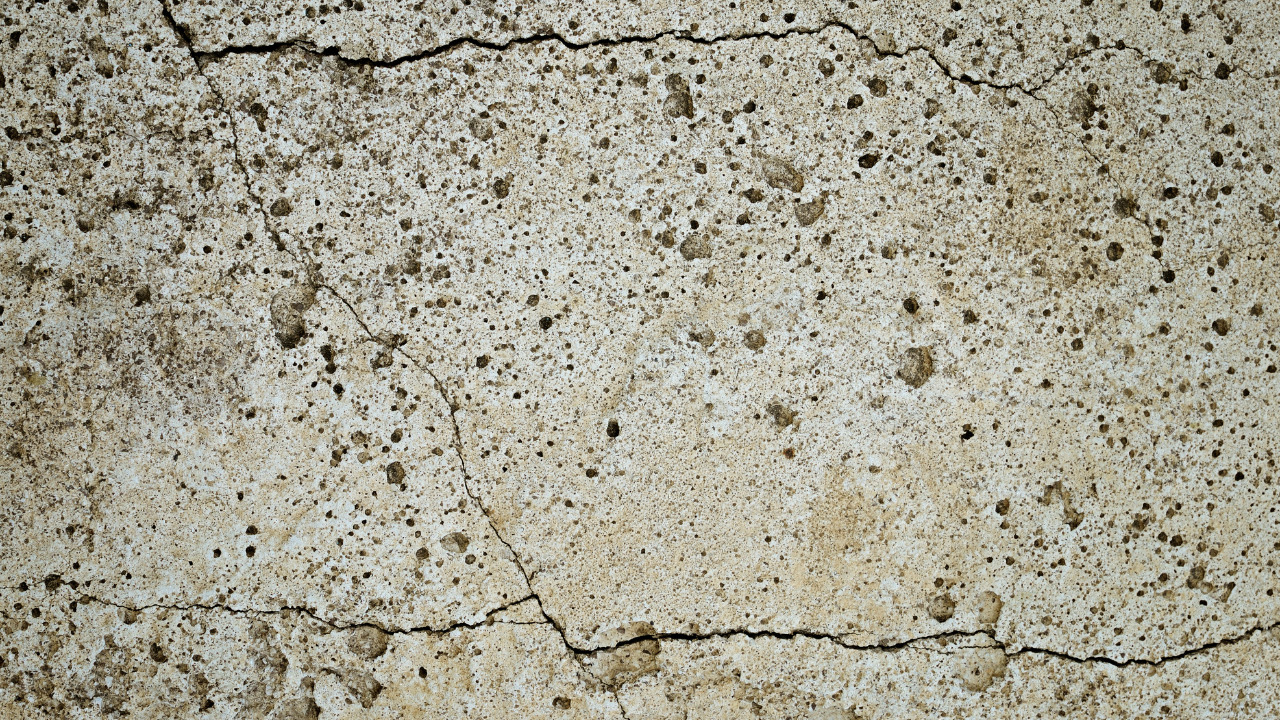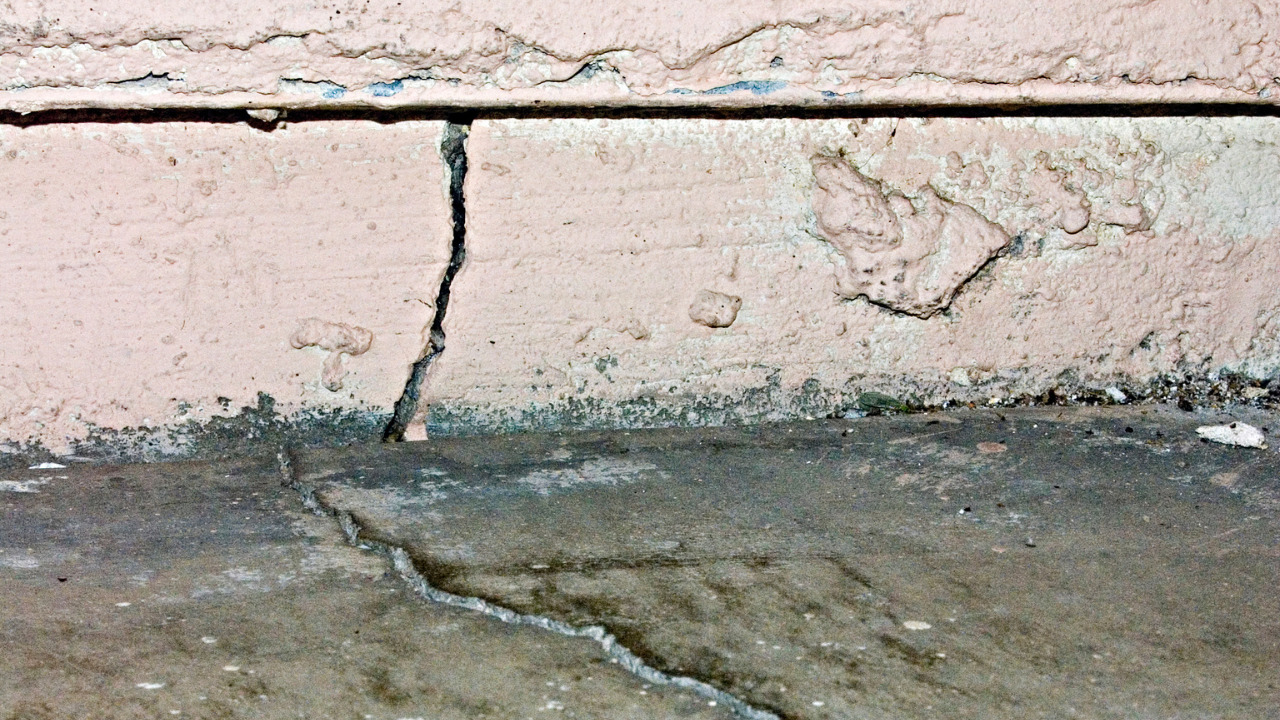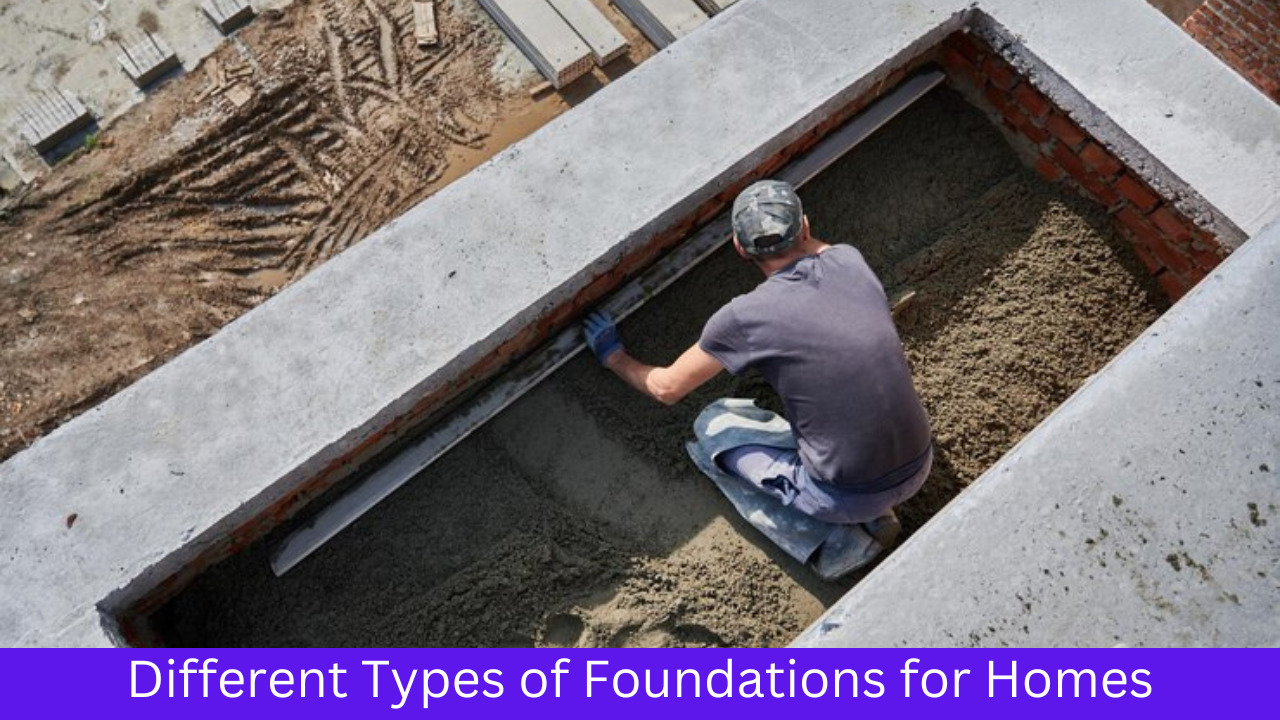If your building doesn’t have a basement or a crawl space under it, you have a concrete slab foundation under it.
A slab foundation, also termed as “slab-on-grade foundation”, comprises a single continuous layer of concrete slab that is either directly poured on the ground or partly rests on a concrete footer. The slab foundation is typically reinforced with steel bars or steel mesh.
The purpose of reinforcing the slab is to ensure that neither does the building load not the uplift soil pressure induce high tensile stresses so as to crack or rupture the slab. In addition, reinforcement also tends to increase the durability of the concrete.
The introduction of a slab foundation underneath your structure will help minimize the construction time required. This is because they can be built quickly and minimize the excavation effort unlike other foundation types. Therefore, for residential construction, they can be your go-to foundations because they provide simplicity hand-in-hand with economy and structural integrity.
The most common application of slab foundations is in residential construction where it can be considered safe to rest your entire house on a single slab. However, the approach might not be viable for massive loadings.
Table of Contents
Pre-Requisites of Slab Foundation
Since slab foundations have to directly rest on the soil or subgrade, it is imperative to inspect the soil so that it adds to the slab’s strength and durability instead of deteriorating it over time. These requisites are detailed below;
- The underlying subgrade soil should be stable under all anticipated ground conditions (saturated or dry). It should neither be a collapsible soil nor an expansive one in nature. To ensure this, proper soil testing is required so that the slab does not crack over time owing to the soil irregularities.
- The water table at and around the building site should not be very high. This is because with intermittent contact with varying moisture levels, the concrete or reinforcement might get degraded or cracked.
- For slab foundations, repairs or modifications to your plumbing or electrical systems might be very difficult, therefore, a proper design entails giving due consideration to anticipated repairs once the foundation has been laid.
Types of Slab Foundations
There are three different types of slab foundations. The choice of a slab foundation depends upon several factors such as soil type, building functionality and design, climatic conditions, etc.
-
Typical Slab Foundation
A typical slab foundation comprises a poured concrete footer (that may or may not be reinforced with steel) that is cast first, followed by the casting of an outside basement wall. The concrete slab is then laid on the inside part of the footing or footer.
-
Floating Slab Foundation
A floating slab foundation is cast when you want your footing to be a little deeper may be a couple of feet below but not as deep as a typical slab foundation. In this type of foundation, the concrete footing is cast first, followed by the outside wall. Finally, the poured concrete floor is cast on the backfill between footing and slab itself. This is to make sure that the floor of your building is above the grade on the outside.
Floating slab foundation is typically used in areas where water table is high or the soil is relatively unstable. It also rests on a layer of gravel or any other porous material to allow for effective drainage.
-
Monolithic Slab Foundation
This type of foundation involves eliminating the separation or joint between the concrete footing and floor slab by casting them all in one go i.e., monolithically. As a result, this type of foundation offers greater stability because of continuity of concrete.
-
Post-Tensioned Slab Foundation
This type of slab foundation comprises a concrete slab that is post-tensioned. This means that during the casting of the slab, ducts are laid within the slab containing strands that are tensioned after the concrete gets hardened.
When concrete hardens, the strands that are jacked at the ends are stretched (tensioned) and the prestressing force is then transferred to the concrete member by releasing the strands and transferring the force by bearing at the ends of the member.
Casting of Slab-on-Grade Foundations
The preparation of concrete for casting slab-on-grade foundations is similar to traditional concrete preparation. However, for this type of foundation, the soil is carefully inspected for stability. Following this, a layer of polythene sheet is laid on the subgrade so that the soil does not come contact with the concrete slab.
The reinforcement is laid and concrete is poured using pumps directly on the subgrade with just an intervening layer of polythene present. Once the concrete is poured, the surface is finished and levelled off. Finally, it is cured for the required time for strength development purposes.
Thickness of Slab Foundations
The thickness of slab foundation generally depends on a number of factors such as the subgrade properties and type, the design loads coming from the structure, the need for slab reinforcement, etc.
However, it is recommended that the thickness be kept at least 4 to 6 inches and if the slab is designed to support heavier loads (such as traffic loading) the thickness needs to be increased. It is relieving to know that this regard, the provisions and guidelines of ACI Code are available and must be consulted for a final determination.
Where can Slab Foundations be Used?
Slab foundations are preferred for relatively simple structures that are not subjected to very heavy loading and where the soil performance can be predicted to some extent. In addition, for a slab foundation, the site location should be flat, with stable soil.
Under the above circumstances, slab foundations can have a variety of applications as discussed below;
- They can be used to effectively bear the loads coming from a residential building. Therefore, they are most commonly seen in residential construction works that accommodate small to medium-sized families.
- They can also be placed underneath small commercial buildings such as office spaces, small stores, etc.
- Industrial buildings usually have slab-on-grade foundations because these buildings are mostly steel-framed and have relatively less dead load in comparison to concrete structures. Therefore, in warehouses and other manufacturing units, you might actually come across this foundation type.
- Slab-on-grade foundation can also be used under swimming pools provided the soil conditions are inspected and proper waterproofing measures be taken to prevent water from seeping into the reinforced concrete slab.
- In education centers such as school, colleges, universities, etc., slab foundations can be used.
- They can also be used for any construction related to agricultural works such as livestock facilities, barns, etc.
Possible Failures of Slab-on-Grade Foundations
-
Differential Settlement of Underlying Subgrade
Differential settlement may take place if the soil underlying the concrete slab is not uniformly stable or well-compacted. In this type of failure, a part of the slab resting on the weaker or unstable soil settles, leading to cracking in the concrete.
Differential settlements can be avoided by a keeping a check on the soil that has to bear the slab loading. This includes verifying its properties through laboratory testing to find out if its problematic, compacting the soil at site being laying concrete and checking for the fluctuations in water table in the locality.
-
Cracking of Slab
Tension cracking may become apparent since concrete is weak in tension. However, as a normal practice, slab-on-grade foundations are reinforced with steel bars or mesh. Cracking in slab may either be due to the applied loads or due to uplift pressure of the underlying soil.
-
Moisture Ingress
If the concrete slab is porous, the commencement of moisture ingress will be an alarming bell. This is because once moisture penetrates into the concrete, it will not only attack the reinforcement but also cause the concrete to disintegrate or splinter.
In addition, if the subgrade or soil is sensitive to variation in the moisture levels, it is not the best material for your slab foundation. If the soil contains sulphates or any chemicals, adequate measures should be taken to protect the concrete from any sort of chemical attack.
-
Reinforcement Corrosion
In case of reinforced concrete slab, the corrosion or steel reinforcement will break the steel-concrete bond at the interface, leading to disintegration and cracking in concrete. Therefore, water should be prevented from seeping into the slab and for this, any water-proofing material can be laid.
Corrosion-induced cracking in concrete makes the steel ineffective in contributing to bearing the applied loads. Since, concrete is fragile in tension, the slab becomes prone to failure anytime soon.
Advantages Offered by Slab Foundations over Spread Foundations
Owing to a simplistic design and easy execution, slab foundations offer many advantages over other foundation types. Let us walk through all of them one by one.
- Building foundations are the most important structural components that bear the entire structure’s loads. However, oftentimes, in pursuit of a sound foundation, the anticipated costs also increase substantially. However, in case of slab-on-grade foundations, you can get a blend of strength and cost-effectiveness owing to lesser labor and materials required to execute it on site. Other foundation types such as crawl space or basement foundations are expensive options that sometimes may drive away clients.
- Slab foundations typically require low maintenance because of absence of any crawl space or basements. That may otherwise incur some repair or maintenance costs This is why home owners prefer going for this type of foundation.
- Slab-on-grade foundations are also energy efficient in terms of aiding in retaining heat within an interior. This can help reduce heating costs during winters. Owing to a direct contact with ground, the inside temperature of your building will fluctuate less.
- For elderly or disabled persons, accessibility to the building inside is a major concern. However, with slab foundation, this concern can easily be tackled since they provide level entry points.
Drawbacks of Using Slab On-Grade Foundation
Despite offering many advantages to home owners, slab foundations also have a darker side to their use and we will not keep you secluded from knowing its drawbacks. However, consulting a structural engineer is recommended to weigh in all the pros and cons.
- In case of slab foundations, the entire concrete is poured on the subgrade which ought to be stable and flat. This means that you will have limited design options and therefore, this foundation type will not suit structures with complex geometries and designs or for structures constructed on steep slopes.
- The underlying soil is an important parameter and any signs of instability in the soil in the form of differential settlement, sensitivity to moisture levels, etc. will have a bearing on the concrete slab. It may even crack or disintegrate depending upon the level of instability in the subgrade. This somehow depicts the leaning of concrete slab’s longevity on the soil that bears it.
- With slab-on-grade foundation, you will have limited access to plumbing and electrical systems since they are buried within the slab. This means that any repair in these systems is likely to incur you heavy costs because doing so will be challenging and time-consuming.
- With slab foundations, there is no basement or crawl space to access, so, you might end up with reduced storage space in your house which is deemed a disadvantage for home owners.
Cost Comparison of Slab Foundation and Spread Foundation
In general, taking into consideration the material and labor costs, slab foundations are less costly in comparison to spread foundations. This is because in the latter case, individual footers are laid underneath the superstructure’s columns or walls and this is also a time-consuming task that requires more resources.
In addition, spread foundations require more materials and labor. On the contrary, slab foundations can be poured and executed quickly and easily. Less site preparation in the form of excavation is required and the structure can be brought to serviceability in lesser duration or time.
Frequently Asked Questions (FAQs)
What is a spread foundation?
A spread foundation is a type of shallow foundation that comprises individual footers of any shape underneath every column or wall. The purpose of a spread foundation is to distribute the loads coming on each column to a wider area and finally dissipate then into the soil.
Spread footings can have many shapes such as rectangular, circular, square, etc. and they are mostly reinforced with steel bars to provide additional strength in tension.
What is meant by uplift pressure?
Uplift pressure is the pressure exerted by the soil in the upward direction on any footing or foundations placed on it. As a result of the uplift pressure, the foundations begin to bend or heave, developing tensile stresses on one side and compressive stresses on the other.
Therefore, to prevent the concrete slab from tensile cracking, reinforcement at the top is also provided to keep a safety margin against uplift pressure.
What is meant by crawl space?
In homes and other buildings having a raised foundation, you will often see some unfinished space located underneath the building. This is called the crawl space and it is called so because the height of the available space is just sufficient for someone to crawl through instead of walking upright.
Small openings such as trapdoors and vents can be used to access the crawl space. It provides advantage in terms of an added space for storage.


